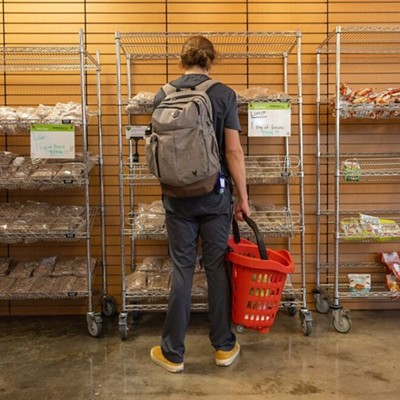"My dream is to be an honor roll student. My other dream is to be on Home Makeover: Home Edition. I just wish they would come and rescue us from our house...I want my kids to have a better life than I do: have more food, a bigger house with no mold. Get to do what they want to do, and need to do, and never be hungry." -- Rosie, Fifth Grade, Collbran, Colorado
The movie A Place at the Table opens in Collbran, Colorado, a town of fewer than 1,000 people that lies about an hour from Grand Junction, and it is here that we meet Rosie. Rosie is a bright, friendly fifth grader whose family can't afford enough to eat. They rely on Pastor Bob's soup kitchen to survive. That Rosie doesn't really dream all that big -- enough food so she can concentrate long enough to make honor roll, and a stint on a reality show that includes a trip to Disney (what 11-year-old doesn't dream about that?) -- makes the reality of her hunger all the more heartbreaking.
A Place at the Table introduces us to what hunger and food insecurity mean in America today, and in a historical perspective. We meet the players -- the food insecure, the legislators who legislate their hunger, the non-governmental organizations whose efforts can hardly staunch the tide of need, and anti-hunger experts and activists -- in a 90-minute exploration, and indictment, of what is being done to stop hunger in the United States.
The short answer: not enough.
Directors Kristi Jacobson and Lori Silverbush put faces on the hungry so we can see that hunger is both rural and urban, black and white, young and old. After Rosie we meet Barbie, a young single mother of two in Philadelphia who rejoices when she finds a job after being unemployed for a year, but despairs when that job means her children are more hungry than they were when they were eligible for public assistance. We meet Joel Long, a cattle rancher who leaves his ranch at 3 p.m. to clean schools until late into the night to make ends meet. (That government farming subsidies don't help a guy like Joel is underscored but unspoken.) We meet Tremonica, an obese second grader in the Mississippi Delta whose access to healthy food is limited. These people illustrate two important facts:
1. The hungry in this country are not made up of lazy, shiftless welfare queens but of families who belong to the "working poor," and 2. The public assistance program is broken to the point that people who do successfully get off of it are still hungry or worse, even hungrier than when they were eligible for benefits.





